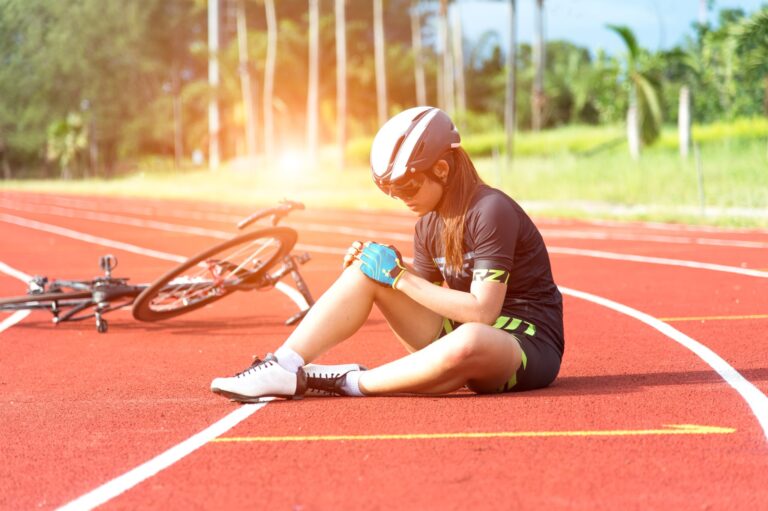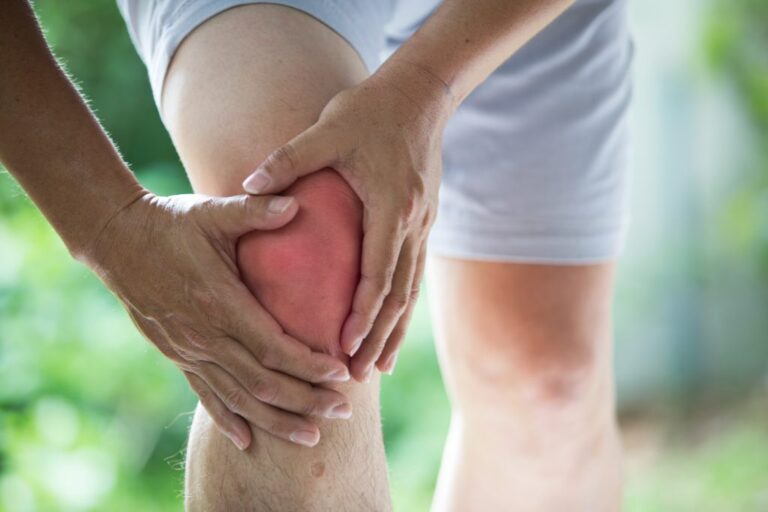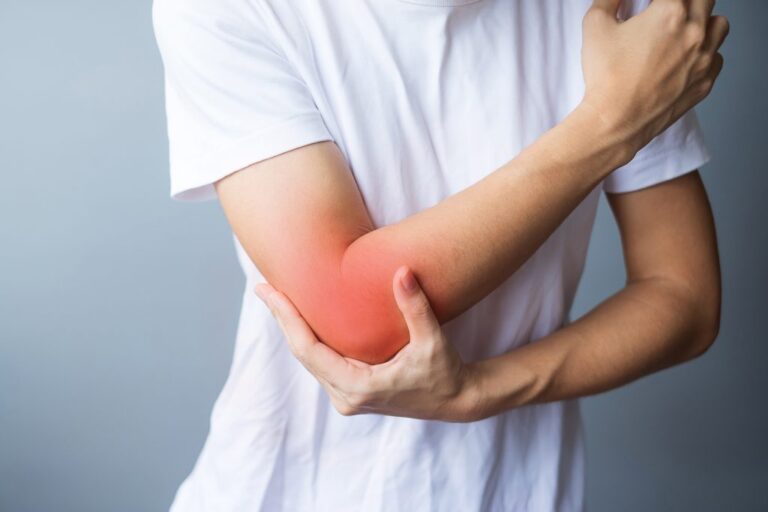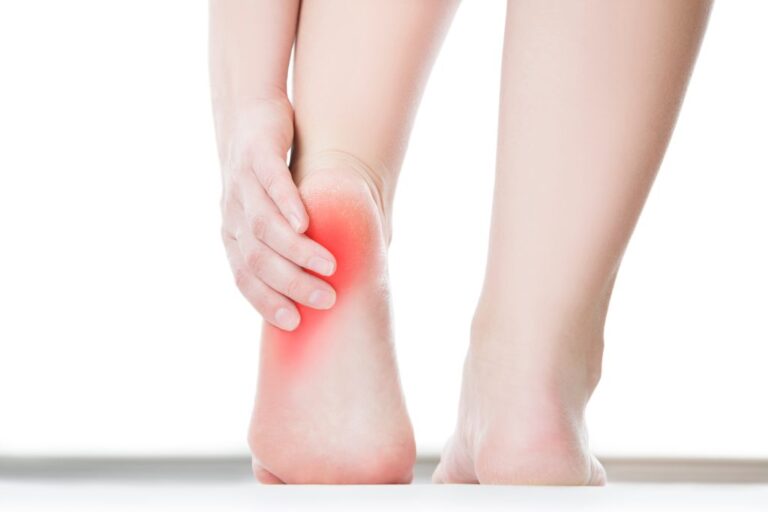7 Most Common Sports Injuries
April 28, 2023

What do Tiger Woods, Michael Phelps, and Serena Williams have in common? Besides being internationally known athletes in their field, they have also all sustained sports injuries.
Tiger Woods is well known for making a comeback to golf again after undergoing several spine surgeries. Michael Phelps has also had two cortisone shots to his shoulder months before competing in the Rio Olympics, and Serena Williams has had multiple injuries to her knees.
Sports injuries are common when we participate in sports, hence it is important to be aware of what injuries you are prone to and how to identify them before the condition worsens. With this in mind, here are the seven most common sports injuries.
Strains
Muscle and tendon injuries are called ‘strains’. They are different from ligaments as muscles are connected to bones via tendons, and ligaments connect directly from bone to bone. Muscle or tendon strains happen very frequently in those who are physically active regardless of the sport, accounting for 10% to 55% of all acute sports injuries; however, the incidence of a particular muscle being injured varies among the different sports. For example, there is a higher incidence of the hamstring muscle and tendon injuries in track running and explosive power sports. Muscle and tendon strains often feel like:
- Soreness, tightness, and stiffness of the muscles which increase with further exertion
- Pain is localised to the injured region and does not radiate to other parts of the body
- Resisted movements of the limb will cause a sharp increase in pain (e.g. a resisted knee bending movement when your hamstring is injured)
Sprains
The term ‘sprains’ is used to identify injured ligaments. Ligaments are not as flexible as muscles and tendons and are more easily injured when they are stretched beyond their limits. Ligament strains are divided into three grades, making them easier to diagnose.
- Grade I – There is mild pain and swelling which lasts less than 7 days, and your daily functions are not affected much. You can still walk or lift things without assistance.
- Grade II – Pain and swelling increase, with some visible bruising. The injured area is tender to touch, and resisted movements to the affected joint will be painful.
- Grade III – Walking or using the injured joint may not be possible, and there is significant pain and swelling. The joint will feel ‘unstable’.
Knee Injuries

Knee injuries vary according to the circumstances the injuries are sustained and the mechanism of injury. – Non-direct traumatic injuries usually involve a fast-paced change in direction with the foot planted on the ground, such as anterior cruciate ligament injuries during football. Traumatic injuries are direct trauma and impact injuries to the knee and are common in contact sports such as in martial arts like MMA and Jujitsu.
- Ligament injuries – Depending on the force and direction of the injury, the anterior cruciate ligament (ACL), posterior cruciate ligament (PCL), medial collateral ligament (MCL) and lateral collateral ligament (LCL) are the knee ligaments that can be involved. A severely torn ligament will cause knee instability.
- Meniscus injuries – The knee meniscus acts as a shock absorber whenever you walk, run, or jump. Torn menisci can feel like your knee ‘catches’ or ‘locks’, and twisting motions are painful.
- Bursa injuries – The fat pad underneath your kneecap helps the knee to glide smoothly during bending movements. Injury to this bursa usually happens from repetitive bending motions or a direct impact on the kneecap.
Back Injuries
Back injuries are common sports injuries and often occur when there is a repeated rotation or bending motion of the trunk (think golf, weightlifting, and gymnastics). There are three common types of back injuries:
- Spondylosis – This is the degeneration of the spine, which happens naturally during ageing but is also accelerated by heavy sports. Similar to osteoarthritis in other joints, the common symptom is stiffness and pain
- Spondylolysis – A fracture of part of the vertebrae called the pars interarticularis occurs. This happens especially in sports with repeated hyperextension movements like gymnastics.
- Spondylolisthesis – Spondylolisthesis occurs typically as a result of the above two conditions when one of the spinal bones slips out of position due to spinal instability, usually going forward from its initial position. Although not fatal in most cases, it can cause pain and tingling or numbness down the legs.
Fractures
A fracture occurs when a direct impact on the bone results in disruption to the bony architecture. Some common types of fractures are:
- Hairline fractures – These fractures are also sometimes called stress fractures. These small cracks in the bone occur due to a buildup of load and stress on a particular bone. This includes hairline fractures to the shin bone in long-distance runners. MRI scans are often needed for diagnosis
- Open fractures – Open fractures occur when the bone is broken to an extent that it breaks through the skin. Such fractures require immediate medical attention due to the high risk of infection.
- Closed fractures – These fractures are usually only visible with X-ray imaging, although some may have a visible deformity under the skin.
Tennis Elbow

Tennis elbow is a common sports injury that often occurs in racquet sports though not just limited to it. In one study, researchers found that tennis players who played on average 4 times a week for at least a year or more had a tennis elbow incidence percentage of 50% during their active years! Tennis elbow happens when there is inflammation as a result of micro-tears in the tendon of the forearm extensors, which is found on the outer part of the elbow. Pain occurs during resisted repetitive wrist and elbow extension movements, which typically occurs during the outward backhand swinging motion of the tennis racquet.
Plantar Fasciitis

Plantar fasciitis is primarily due to repetitive strain – long hours of standing, walking, or running – causing micro-tears of the plantar fascia that runs from your heel towards the bones between each toe (metatarsals). The most common symptoms are:
- Worst Pain with the first few steps out of bed in the morning.
- Pain first decreases with progressive movement but then increases throughout the day.
- Tenderness when applying pressure to the heel and the arch of the foot.
When to See a Specialist?
Getting familiar with these 7 common sports injuries can help you recognise pain or swelling that doesn’t decrease over time. When the discomfort lasts more than 3 months and causes difficulties in performing daily activities, you should consult an orthopaedic specialist like Dr Ananda Vella, who specialises in traumatic sports injuries, as soon as possible before the condition worsens.
Dr. Ananda Vella is a Singapore and Swiss-double-fellowship-trained MOH-accredited orthopaedic specialist consultant surgeon, As a former consultant from the Singapore General Hospital and Sengkang General Hospital and with more than 20 years of experience, Dr Ananda treats a variety of orthopaedic bone and joint conditions, including in his subspecialty focus of foot and ankle conditions, hip and knee pains, as well as sports injuries. Dr Ananda is also well-versed in minimally invasive surgical techniques, including having performed the first lateral total ankle replacement surgery in South-east Asia to improve outcomes for patients with severe arthritis.
Dr Ananda regularly practices in 3 clinics across Singapore and is accredited to operate in all private hospitals in Singapore. Should you have any queries or need any further assistance, please do not hesitate to schedule an appointment with our Dr Ananda by WhatsApp at 8860 0642 for assistance. Alternatively, please leave us a message via the enquiry form and we will get back to you as soon as possible.
(All Rights Reserved)



